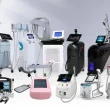Non-Viral Drug Delivery Systems Market: A Comprehensive Overview
The Non-Viral Drug Delivery Systems Market is a rapidly evolving field that plays a critical role in modern medicine. As we delve deeper into this topic, several key aspects emerge, including technological advancements, regulatory challenges, and future prospects.
Technological Advancements
Recent innovations in non-viral drug delivery systems have significantly enhanced their effectiveness and applicability. Some noteworthy advancements include:
1. Nanoparticle Technology
Nanoparticles are at the forefront of non-viral delivery methods. They can be engineered to encapsulate various types of drugs, including small molecules and biologics. Their small size allows them to penetrate biological barriers more easily, ensuring that therapeutic agents reach their intended targets. Additionally, nanoparticles can be designed to release drugs in a controlled manner, improving treatment efficacy and minimizing side effects.
2. Lipid Nanoparticles (LNPs)
Lipid nanoparticles have gained attention, especially in the context of mRNA vaccines. They serve as carriers for mRNA, protecting the molecules from degradation while facilitating their delivery into cells. This technology has been pivotal in the rapid development of COVID-19 vaccines, showcasing the potential of non-viral delivery systems in urgent public health scenarios.
3. Cell-Penetrating Peptides (CPPs)
CPPs are short peptides that can facilitate the transport of various molecules across the cell membrane. Their ability to enhance cellular uptake makes them valuable in delivering therapeutics that would otherwise struggle to enter cells. Researchers are increasingly exploring CPPs for gene therapy applications, where delivering nucleic acids into cells is crucial for efficacy.
Regulatory Challenges
While the potential of non-viral drug delivery systems is vast, several regulatory challenges can hinder their development and approval:
1. Safety and Efficacy
Regulatory bodies such as the FDA and EMA require extensive safety and efficacy data before approving new drug delivery systems. Non-viral systems must demonstrate minimal toxicity and effective delivery of their payloads. This can require extensive preclinical and clinical testing.
2. Manufacturing Consistency
Ensuring consistent quality and performance in the manufacturing of non-viral delivery systems is essential. Variability in production can lead to differences in drug efficacy and safety, complicating regulatory approval processes. Companies must invest in robust quality control measures to meet these requirements.
Future Prospects
The non-viral drug delivery systems market is poised for significant growth in the coming years, driven by several factors:
1. Increasing Chronic Diseases
As the global population ages, the prevalence of chronic diseases such as cancer, diabetes, and cardiovascular disorders is rising. This trend drives demand for innovative treatment options, including non-viral delivery systems that can provide targeted therapies with fewer side effects.
2. Personalized Medicine
The shift toward personalized medicine is another significant driver. Non-viral delivery systems can be tailored to deliver specific therapies based on a patient’s genetic makeup or disease profile. This customization enhances treatment effectiveness and minimizes adverse reactions.
3. Expanding Research and Development
Ongoing research in gene therapy and regenerative medicine is expected to fuel advancements in non-viral delivery systems. As scientists uncover new therapeutic targets and delivery methods, the market for these systems will likely expand. The integration of artificial intelligence and machine learning in drug design and delivery is also predicted to revolutionize the field.
non-viral drug delivery systems market
Contact:
Roots Analysis












